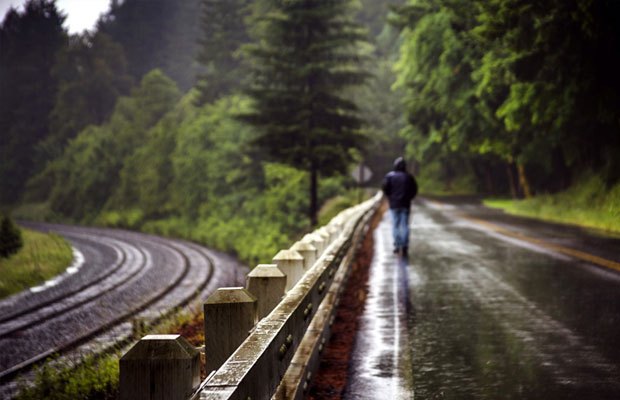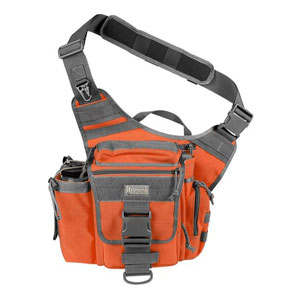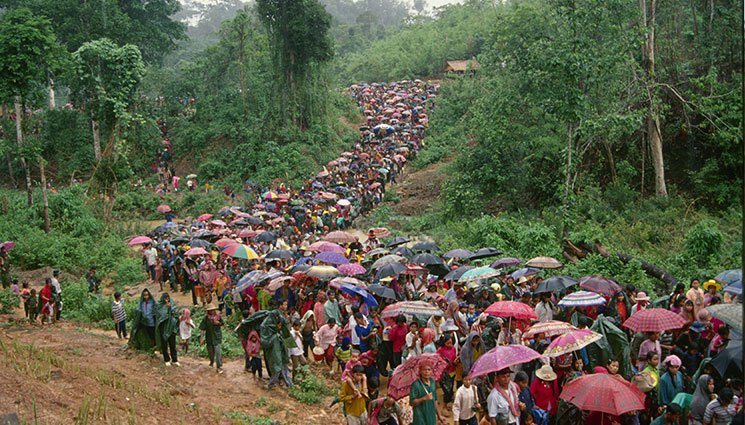
In a disaster our first instinct is to move as quickly as possible to safety or to the closest approximation we have to our ideal of safe. For me, if anything happens my goal is to get back to my home as quickly as possible. I have supplies at home specifically designed to help me and my family handle the aftermath of almost any emergency and logically this is our first/main rally point in any crisis. No matter where I am if something happens I will be working immediately to make it back to reunite with the rest of my family. My get home plan is my first priority if I am away unless there is something that prevents me from reaching home. This is less of an issue if I am with my family and we are together, but I like most of you spend a good part of my day away from home.
We like to speak of the ideal of heavily stocked survival retreats located on hundreds of acres of land in the boonies only accessible via a dirt road and after crossing several water hazards. That is the ideal maybe, but almost none of us, when you start looking at the numbers live anything near that type of lifestyle. Are there people who live in remote areas? Of course, but for most of us, our survival retreat is our home in the suburbs or semi-rural areas still easily accessible by plenty of roads with a Walmart within a short drive. Even more live in the cities where our neighbors are practically on top of us. Most of us who call ourselves preppers do not live year round at a retreat taking care of livestock, building barns and furniture from trees we felled and wood shaped with hand tools. Most of us work a job for someone else in an area that is anything but remote and that is almost always away from home. I personally want the retreat, but unless my life changes drastically that isn’t going to happen anytime soon. For me right now, I am where I am so I plan to make the best of it. If something happens I will be heading to my home.
There are multiple strategies for travel needed with the unexpected emergency but the variables start adding up when you consider all the permutations of what the emergency could be and where you are at the time. Today I want to talk about how you can begin to prepare for a situation where you are at work and your goal is to get back home to your family, your supplies and your castle. In a lot of cases you have to plan for situations that are out of the norm. The first plan of course would be to simply hop in our cars and drive home, but what if the roads were blocked? What if you couldn’t even reach your car? You should make a plan now for getting back home in alternate ways and plan for travel that isn’t ideal.
My Get Home Bag of choice right now.
How will you get home?
Before we can really start discussing how to get home, you have to take into consideration how far away home is. For the purposes of this article, I will use the example of a typical work day. For most of us that means we leave home in the morning, go to work and return home the same day. I have written articles on getting home from much further distances, but for this article we’ll assume you aren’t on the other end of the country, you are at your regular day job.
One of the first things I recommend thinking about is a Get Home Bag for anyone who works more than a few miles from home. I personally use the Maxpedition Jumbo Versipack right now pictured on the right. A get home bag has been called by a lot of other names, but it is simply a bag with basic supplies that you might need in order to walk back to your home. This is not the same as a bug out bag, but the concepts are related. All of these bags are simply containers for some essentials you might need in an emergency situation. My Get Home Bag is stored in the trunk of my car and has very basic items because on an average day I am not more than 15 miles away from home. I have spare water, some food in the form of a Mainstay bar, work gloves, lighter, paracord, ammo, multi-tool, headlamp and dust mask along with some blood stopper bandages. Could I pack more in there? Of course but I try to lean toward the minimal side on these bags and focus more on what I really could need versus what would be nice to have. For example, I don’t have a compass because I know my town and where my home is. I don’t have hand sanitizer because that is the last thing I am going to worry about. I don’t have a radio because I should be home in a few hours tops but I do have a ham radio in my car that is mobile. Your get home bag should have what you would expect to need on your trek home.
But what if my car is blocked or I can’t get to my car? What if the parking deck that my car sits in all day is shaken to the ground by an earthquake or an explosion? That is when the absolutely prepared person would grab their back up bag from their desk. I don’t have a bag in my desk and really I don’t live far enough from work that I don’t think I could make it back even without a bag. Couldn’t I leave my Get Home Bag in my desk at work and eliminate that problem? Sure but what if my office is closed or blown up or for some other reason I can’t get back to my desk? For me, the trunk of my car is the safest bet that will be with more more often than my desk drawer and if that doesn’t work out I will adapt. One thing you don’t want to have to adapt to are the elements though. I carry rain gear on days when there is a chance of rain even if I don’t plan on going outside. Cold weather is the same thing. Its easy to leave home and think that you will just be in the car, but what if you are forced to walk? Dress for the weather outside, not the weather inside.
Another aspect of making it back home is to have footwear up to the challenge. I have written before about how so many people wear flip-flops everywhere they go now and I shudder to think about what it would be like in a real disaster to have virtually no protection on my feet. As well as my Get Home Bag I have a pair of sturdy work boots in my car. I never wear flip-flops but if for some bizarre reason I have a John McClain moment and am caught with my shoes off I will have a backup.
Carry your Every Day Carry – EDC
Another aspect of my preps is my EDC or Every Day Carry items that I have on my person at all times when I am away from home. For me, my EDC consists of a concealed handgun, handkerchief, multi-tool, flashlight, knife and water. My water bottle is in my backpack with my computer, but I always have that with me. These items augment what I have in my Get Home Bag and I try to religiously make sure they are on me. If I am walking out the door to work I have an almost perfect track record of taking all of my EDC gear, but it is the odd times where my outfit choices are different when this falls down. Going to the pool for example, I have been known to change things up due to necessity and some of my gear stays in the car as opposed to poolside.
With my EDC gear it is always in my pockets or my bag, but how many of you have gone to the bathroom without your cell phone? How many have run down to the corner store without your car keys? What if something prevented you from getting back to your desk or work location and the only way you had to get into your car was several floors up, or under rubble? I try to take my keys and cell phone with me anytime I leave my desk so that I will have this option if needed.
Plan more than one route back home
Where I live, there isn’t a tremendous amount of traffic so I routinely take the same route to and from work. This is the quickest way for me to travel, but in an emergency, roads could be blocked and impassable. If needed, I can take alternate roads, but in some cases that might make my trip longer by taking me further away from home to route back to a good road. Alternately you could cut through the woods or neighborhoods but this isn’t always faster. In some situations, it might be a bad idea to cut through someone’s yard and you could find yourself in an altercation you didn’t need to get in. What if your travel takes you through a rough part of town? You would necessarily want to avoid those areas at this time so that you don’t become the victim of a predator. It helps to know the area you live in well enough and in some cases to perform what I call Neighborhood Recon to scope out alternate routes and identify obstacles ahead of time. Could you make it through the swamp that is in the woods? Maybe, but would you want to?
Have a communication plan with your family
In a disaster, cellular communications might be down and who has land lines anymore? You used to find a phone booth on every corner but now they are nonexistent where I live. My communication plan is really meant to address a lack of communication I can foresee in a disaster. My family knows what my plans are and that is to come home. I might be delayed but I will stick to the plan. In the event that some crisis hits and my family is not in immediate danger from staying put at our home, they are supposed to wait for me to arrive. Depending on the crisis this could be several hours to a day, possibly overnight. Does your family know what your plans are? More importantly, do they know what to do if you never show up?
What are your plans for making it back home in an emergency if your trusty vehicle isn’t available?





















